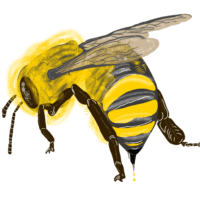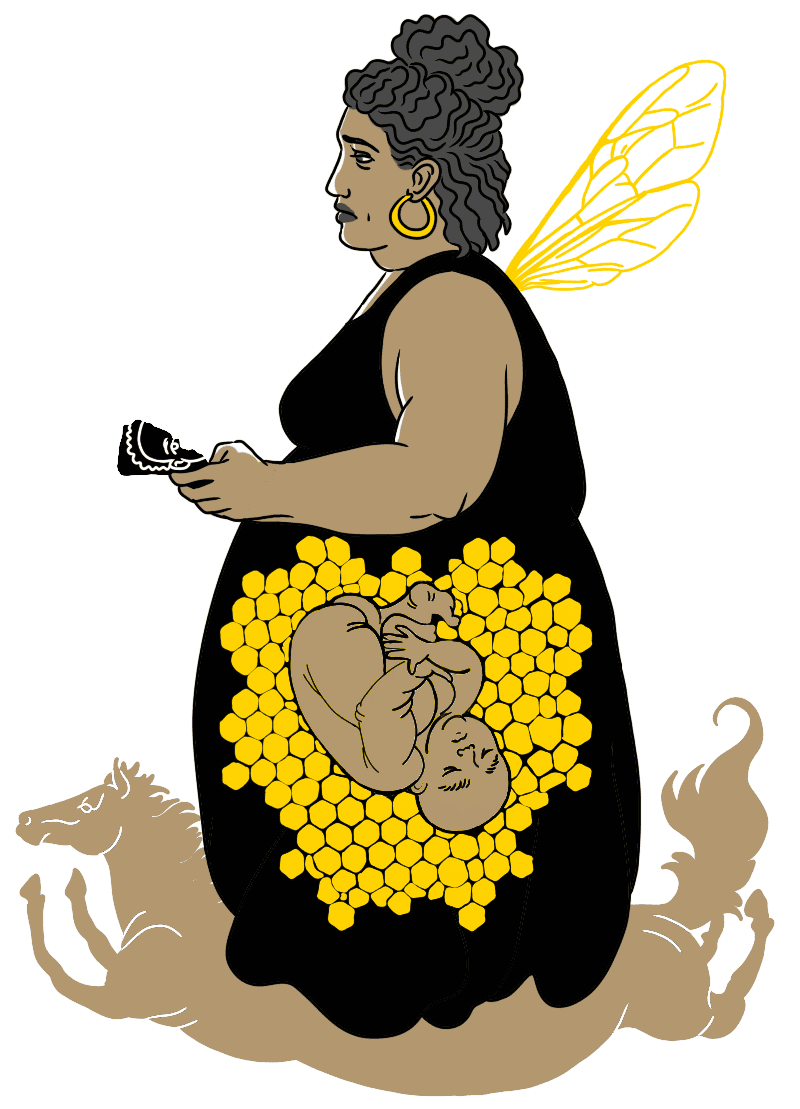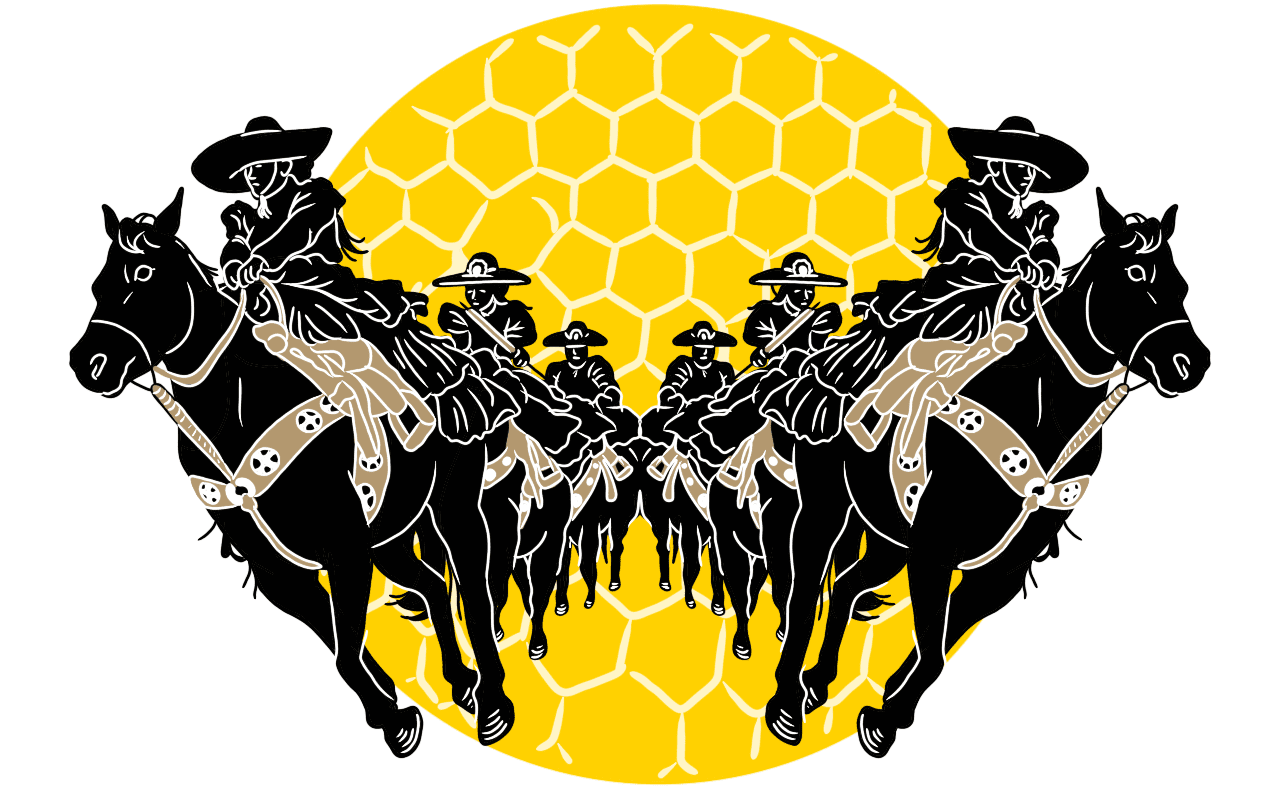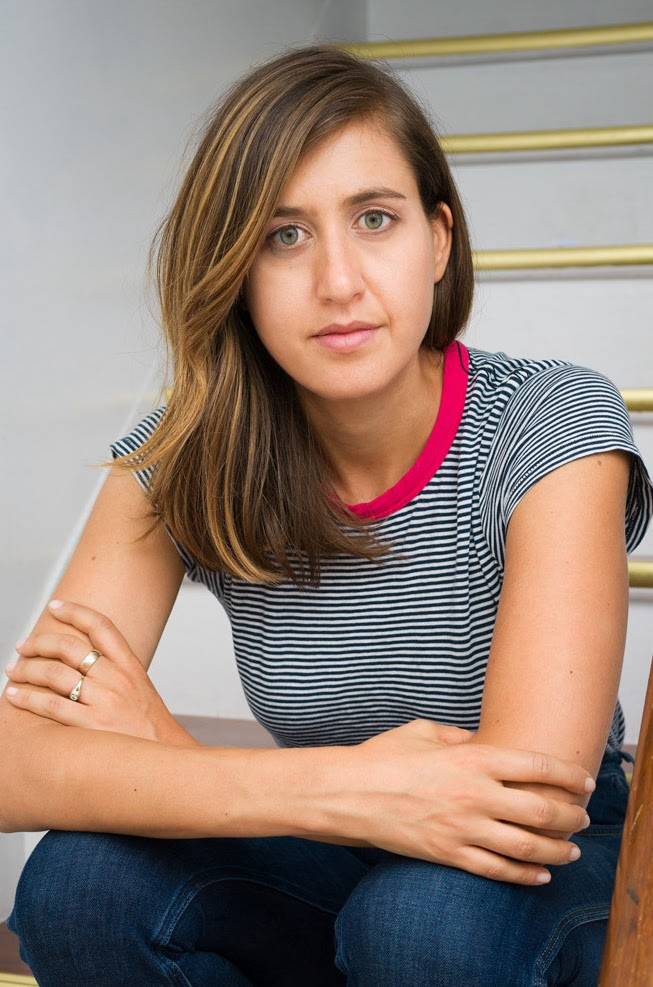My father told me about the bee sting a few months after the birth of my son. He brought it up while I was hanging my new interview suit in the closet. It was not my regular size. Nothing was the same anymore, least of all my body. But whatever, I was out to get a job—any job.
“Remember that charreada in Torreón,” he said.
As I made space in a closet with no working light, I considered that I had about half an hour until my son woke from his nap, and I wanted to email out more resumes before his cries began. I hadn’t thought about Torreón, a Mexican city in the state of Coahuila, for probably fifteen years.
My life was a trashcan fire. I’d moved out of my parents’ Texan home and left the state for the first time, only to return two years later with, yes, a graduate degree, but also, a thoroughly stomped on heart. Plus, a post-breakup surprise: finding out that I’d always have something to remember my heartbreaker by.
Let it be known that an unplanned baby will reveal difficult truths. My former beloved wasn’t a bit sorry for cheating; he was outraged with me for leaving him. And underneath his anger, his utter incredulousness—but we’re having baby.
I didn’t turn a hair. I finished my program in April and drove twelve hundred miles back to Texas, eight months pregnant. My son arrived three weeks later.
My father’s staunch assertion that a baby was a blessing was hard to take. I had shamed him and I knew it The truth is, I am prideful. I never knew how much, until my son came. I know it now.
We only ever went to Torreón for charreadas,” I said to my father. Since returning home I had moved into the spare bedroom because it had its own bathroom. The closet was a big walk-in and packed with family memorabilia. I thought this was why my father was reminiscing.
“A bee stung you during the performance,” he said. “Do you remember that?”
“No.” All I remembered about Torreón was the long car ride from the Texas border and that it figures prominently in old ranchera songs glorifying Pancho Villa.
“How can you not remember that?”
“I don’t know,” I said. We’d competed in charreadas all over south Texas and northern Mexico, just him and me. Not my mother and not my brothers. Just the two of us. Daddy and me. Charro and escaramuza.
Some things: Charrería is the official national sport of Mexico. It’s like how baseball is America’s national pastime even though more people love football. A charreada is a Mexican rodeo.
I’m an adult now and can explain this. I can say my father was a charro.
The most convenient analog is that a charro is a Mexican cowboy. It’s not really true though. Cowboy is the transliteration of the Spanish word vaquero. Vaquero, also anglicized as buckaroo. American West romanticism notwithstanding, cowboy is already Mexican.
A charro is neither a cowboy nor a buckaroo. The word charro literally means horseman, as in someone with enough status to legally own a horse in colonial Mexico. A charro was not just a ranch hand, he was the muscle defending the boss’s territories, and during the War of Independence from Spain, charros were auxiliary militia. The elaborate ornamentation of the charro’s uniform originally denoted the hacienda he represented.
This is why a charro performs spectacular feats of equestrian skill and livestock wrangling while wearing what most people recognize as the iconic mariachi suit. It’s actually mariachi who dress like charros. The suit is called a traje de charro.
Imagine being a fourth grader and having to explain all that when a classmate asks what you did last weekend. To spare myself from feeling like a weird kid who did weird and unpronounceable things, I just stuck to cowboy. Mexican cowboy.
Anyhow, no, I did not remember the bee sting. But there, at the back of the closet, were my father’s beautiful charro suits, hanging in their clear plastic garment bags. What rose for me was the memory of my charro-father. His bold, straight figure. The whizz of the lasso flying true from his hand. His full-gallop leaps from horse to horse. He had been downright dashing, my daddy.
“Well, you were little,” my father said. “I think you were ten.”
I had loved this part of my life, but the memories were dormant after so many years without the language to speak them. If asked, I shorthanded my experience to I was a rodeo queen. It’s true enough, even if people come away thinking I was a barrel racer.
Escaramuza, another mouthful of syllables, though without an American approximate. The fashion trends section of Vogue calls it an “exciting competitive equestrian sport performed by women dressed in stunning traditional costumes, a sport directly inspired by the Adelitas—the female soldiers who fought in the Mexican Revolution.” Christian Dior’s 2019 Escaramuza-inspired Cruise Collection says escaramuzas are—that catch-all, again—”Mexican Cowgirls.”
No. We are not cowgirls. If I say rodeo queen, the emphasis is on queen. Escaramuza is equestrian ballet. High-fashion horsewomanship, a performance of precise choreography and beauty. Eight girls a-horse, festooned in ribbons, white boots and wide sombreros, geared up in Victorian-style pantaloons and crinolines, bright cotton dresses stitched with lace and flowers, the skirts so fulsome they cover the horse shoulder to rump. All this, and a single silver spur because señoritas ride sidesaddle, not open-legged.
In the darkness of the closet, I remembered the smell of flying dust. Always: the flying dust. My mare, Coronela. Her sorrel neck, darkened with sweat, garlanded by the flounces of my dress. The counting and the measuring, the automatic recalibration. My utter self-assurance.
I remembered being in the fourth grade and my teammates were in high school. Tall, remote girls with boyfriends and cars. They hardly spoke to me. They thought I was bratty and annoying. I can’t blame them. I’m sure I was.
My father moved me to a different team, in Mexico proper. The girls were again older than me, but stronger competitors than my previous teammates. They didn’t talk to me at all, not even to tell me to stop acting like a baby. I spoke wobbly agringada Spanish; I wasn’t rich; I wasn’t even a real Mexican, just a grubby little pocha from the Texas side of the border. My father called them snobs, told me they were just mad that I was better.
Yes, I was. I can say that now. I had the best seat on the team. I rode straight-backed and serene, knee over knee, a light hand on the reins, riding crop laid across my arm like a bouquet of flowers. I was the best. But they were all fantastic.
Except the one. The girl whose name is now lost to me. I remember her round, anxious face. Her hand clamped on the reins, holding her mount back. She couldn’t get it right. The agony of her eyes lifting to her father, big-wig of the charro association, each time the coach stopped the routine during practice because she was off-time again. The coach, Doña Lupe, an old woman, hair in a slick low knot at the back of her head, red lipstick and dangly earrings even at night practices. Don’t look at him, Doña Lupe would tell the girl, focus on your timing. Then she would send her off to do figure eight drills.
We had a wreck the time she froze up in the middle of a show. She completely balked and I sideswiped her. She was on crutches for weeks because she caught my boot square in the kneecap. It could have been so much worse. I juked, plunged my mare through the faltering space between that girl and the next rider. Only I wasn’t quick enough to miss her completely.
Girl with the timid face peeping from beneath her hat. Girl who was afraid. I apologized for hurting her. I remember feeling guilty that I had not been good enough to spare her this injury.
I overheard her father tell my dad it wouldn’t have happened if she was anything like me. Sin miedo, he said. This was true about me then. I was my father’s brave little rosebud, for him to flaunt to the world.
My best event was La Punta. A box is marked in the arena, about sixty feet long. The competitor begins poised, at the far end of the stock corridor, a runway of about a hundred feet. She charges down the length of the narrow run. Urges the horse on, fast, faster. Enters the arena at top speed. Stops the horse, all at once. With accuracy, stays inside the marked box.
A horse bidden to stop in this way will slide across the arena, much as a skidding car. Done correctly, it is a shockingly dramatic image: the skirt-flying charge, the horse straining to halt, its front hooves paddling the air, and the woman on its back, fierce and gorgeous on the rearing steed. She brings the horse to heel, executes a sharp salute at the crowd, and rides away at a sedate canter. It is a display of total fearlessness and control.
The judges mark the grooves in the dust left by the horse skidding across the arena. They judge on straightness. They mark how closely the rider got to the edge of the boundary.
If the rider is fearful, the charge is weak. The horse simply trots to a stop. Or the rider doesn’t time the charge and halt correctly and the horse may crash into the arena wall. Sometimes, if the rider isn’t firmly planted, the horse rears and tumbles her off its back. More commonly, the horse can lose its balance, a leg buckles, and both rider and horse go down. The woman must be ready to throw herself clear, but that’s tricky, riding sidesaddle. That happened to me once.
Coronela lost her footing, careened through the dirt in a panicky slide. Fell, luckily on the right, opposite my legs. She sprang to her feet so quick, thundered around the arena, broom-tailed and spooked. I clutched the saddle, legs hooked in, the rest of me hanging in space. The crowd roared as the two of us streaked by, the announcer above them, his swift voice, no pasa nada, no pasa nada, as if by his assertions he could make it so. I remember gripping with everything I had through the layers of petticoat and dress obscuring my gear.
I believe if I’d been wearing jeans I’d have regained my seat on my own. Maybe. Instead, the judges and the coach flung themselves at my mare, hemmed her in, caught her. It didn’t take very long. Maybe a minute. My coach popped me back in the saddle. Asked if I was okay.
I told the coach I was fine. I remember that I actually was fine. I straightened my dress, smoothed it into place, annoyed that it was dirty.
I trotted back to the middle of the arena and completed my salute. The crowd cheered for me, even more than when I executed a perfect Punta on my second attempt.
That was at the national championship in Saltillo. Afterward, women from other teams—adults, horsewomen with decades of experience—asked my name. Eres una maravilla, they said. Their amused faces when I answered, oh thanks, in English.
My father that day. Oh, his enormous pride in my Punta. I took it as a matter of course. Why would I not? I lived in the light of his pride. I thought I always would.
“There was a bee flying in the arena and it stung your mouth,” my father said. “I saw tears on your face as you rode by. Afterward your whole face swelled up. But you never broke stride.”
“Wow,” I said. “I don’t remember that at all.”
Instead, I remembered a phalanx of gorgeous femme-soldiers charging around the arena at top speed, darting and weaving through intricate sequences: the ladder, the net, the fan, the wedding rings, the braids.
“That’s when I knew you’d be fine,” my father said. “All your life, you’d be just fine.”
I knew what he was getting at, though I wanted to point out there’s a big difference between a bee sting and a baby.
I didn’t. I felt too much relief that, though I had disappointed him, he was full of compassion. I said, “Thanks, dad.”
“I love you, kid,” he said, and left the room.
***
Rumpus original art by Lisa Lee Herrick








